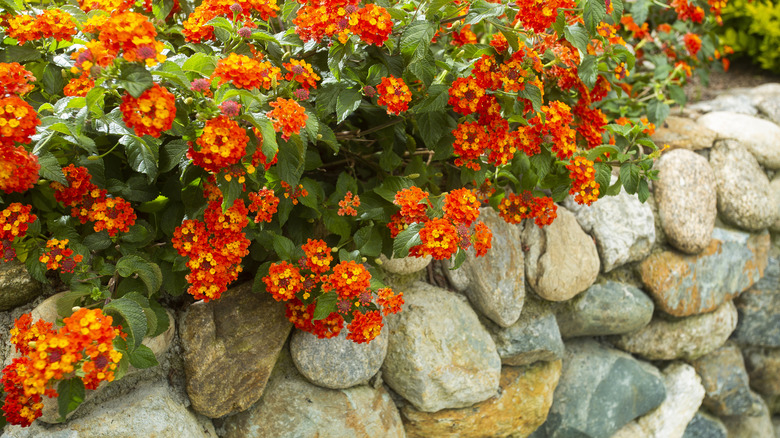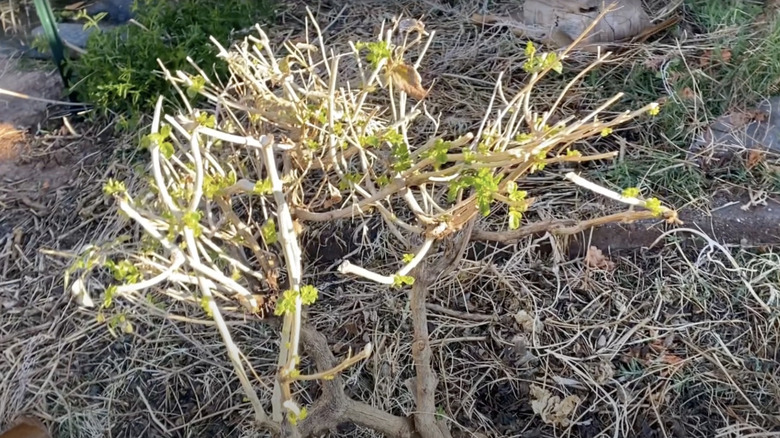Should You Prune Lantana In The Fall? What We Recommend For Luscious Blooms
Since the 1700s, when the lantana (Lantana camara) began to grow in popularity in Europe, this versatile plant has been showcased in border gardens, hanging planters, and containers. It seemingly fits any role you need it to fill; it can be a perennial in warmer climates (USDA Hardiness Zones 9 to 11) — going dormant in the winter and reemerging in the spring — or an annual in colder regions (zone 8 or cooler). Need to add a brilliant yellow or hot pink to your garden? A lantana will do the trick. Want something more subtle, like a creamy white or pale yellow? Again, the lantana can do that for you. Its flowers have lasting power too, blooming all summer and well into the fall.
Because the flowers add star power to your garden, it's essential that you're tending to the plant in ways that promote optimal blooms. This includes deadheading to encourage growth and reblooming, as well as pruning during the proper time of year. For starters, while many gardeners are tempted to prune in the fall, doing so can be harmful to your plant. If the branches haven't healed by the time temperatures drop, the wounds are vulnerable to frost damage. For this reason, only prune dead or damaged — not healthy — branches in the fall. If you're pruning for shape, size, or to reduce crowding, hold off until late winter or early spring.
Tips for pruning a lantana shrub
Before the lantana begins actively growing — typically when the weather warms up — the plant can be cut down to 6 to 12 inches between late winter to early spring, as shown above. This drastic removal of old woody growth allows the perennial to essentially reset before the summer, priming it to sprout new shoots. Because lantanas will spread up to 3 feet, it's important for gardeners to know how to space them in a garden. However, if they've outgrown their spots, late winter or early spring also is a good time to trim them back. Simply cut the plants to about a third of their height and width.
Your lantana may not need an extreme shear, but it could possibly benefit from a nice trim. If some branches have gotten too leggy, selectively prune branches to give your plant a tidier shape. Also consider cutting branches that are crossing or crowding one another. This will allow more light and air circulation within the shrub, resulting in a healthier plant.
When working with your lantana, be aware that its leaves have been known to cause minor skin irritation for some people. More importantly, the plant is poisonous to cats, dogs, and horses, and its unripe berries and leaves are toxic to humans if eaten. Also, lantanas can grow aggressively and are considered invasive in some parts of the United States, including California, Georgia, Alabama, and Florida.

